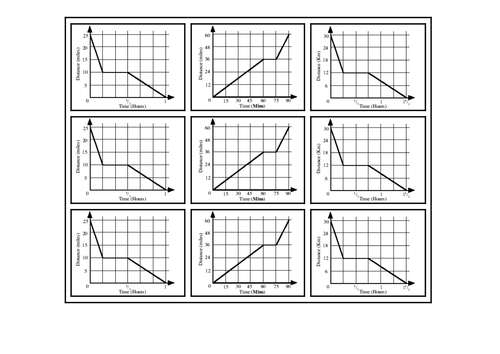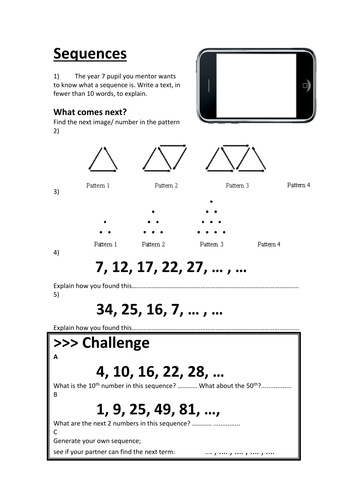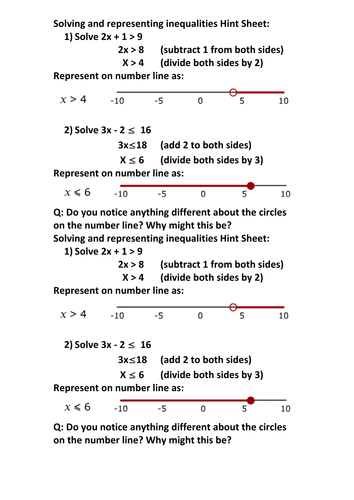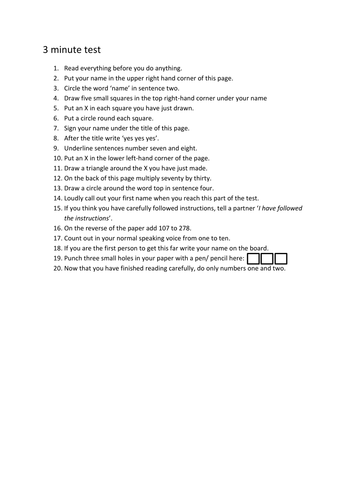36Uploads
351k+Views
687k+Downloads
All resources

3D Coordinates
Building on prior knowledge of finding the midpoint in 2D, this lesson is on finding the coordinates of any point in 3D with more able pupils progressing on to finding the midpoint in 3D. Resources adapted from Psholl, Jmillsdadson, Ben Cooper and NCETM. Includes starter (print double sided),hint sheet), rich activity, 3D grid templates and extension questions. Please Rate

Student Leadership Scheme
Research Project on Student Leadership. Leader begins as deputy supporting Leader & learning roles é responsibilities (A). Progress to Leader the following week é have to make a presentation to the class on maths in the real world. They also nominate other pupils as all stars (D) é receive the attached feedback report (B) in the post upon completion. After all pupils have completed a week a single pupil is elected as Leader and assumes more responsibility including some teaching (E). Feedback so far has been positive from pupils, parents and staff. Please rate.

OPERATION ULTRA: GCHQ Codebreaking Project
Three lesson sequence on codebreaking (ideally completed as a single extended project). Lesson 1 is a lecture from Professor Stupples on the history of Code breaking. Lesson 2 is Spy School adapting resources from Charlotte King and Matthew Jones. Lesson 3 is a codebreaking activity which requires pupils to apply all the skills they have learned. Concludes with unbroken CIA code to crack! Please rate.

Mathematics in Computer Science: Binary coding
This lesson serves as an introduction to the role of mathematics in computer science by looking at binary coding. It begins with a guess my number magic trick grounded in binary before exploring binary coding through a series of activites, games and codes. Worksheet and conversion tables included. Resources adapted from gedlad and hannahskellan. Please rate.

Introduction to Distance-Time Graphs
Introduction to Distance-Time graph which starts with exercise on finding the gradient of lines (on a Distance-Time graph). It then leads on to a collective memory task to discover the key features of a Distance-Time graph. After a couple of worked examples, progress can be tracked through a mini-plenary which leads into a matching activity (find correct description for each graph). The lesson is rounded off with 5 quick questions. Please Rate.

Directed Number - intro and treasure hunt
Introduction to Directed Number with KS3 or lower ability GCSE. Introductory questions, together with Whiteboard questions. Review of adding/subtracting negative numbers before treasure hunt activity. Print out 18 Treasure hunt cards and distribute around the room. Students can start on any card by looking at the question at the bottom. They should make a note of the letter in the bottom Left hand corner and then try to solve the question. They will then need to look around the room to find a card which has their answer at the top. They should again note down the letter in the bottom left hadn corner; attempt the question; find the next card etc. If pupils complete all 18 questions, they should recognise there are two works ISOSCELES TRIANGLE- but some may spot the pattern and predict the words (which is fine too). Once they bring you a picture of this, provide them with the extension questions (last slide) which gets them to explore the rules with multiplying/ dividing by negatives. MWB questions to review that also integrate BIDMAS. Please review.

PSHE Stimuli for discussion topics
Extensive list of links to articles and videos that can be used as stimuli for discussion topics during tutor time or as part of the PSHE curriculum. Essential for PSHE coordinators, Heads of Year and Form Tutors. PLEASE REVIEW.

Introduction to Bearings
The lesson begins with revision of measuring angles before introducing bearings and considering similarities. AfL mini-plenary leads on to 8 examples to complete in books before activity which involves pupils finding bearings to fly on between different cities and potentially discovering reciprocal bearings. Plenary has 5 quick questions and additional challenge questions if required. Please rate.

Multiplying and Dividing by Powers of 10
Introduction to multiplying & dividing by powers of 10. Starter consolidates prior learning of multiplying/ dividing by multiples of 10. Lesson then facilitates pupils understanding of link between multiplying/ dividing by multiples of 10 and powers of 10. Additional question can be generated using question generator from bowenr. Consolidation is through mini plenary of 5 quick questions before main activity of completing a circuit of questions which require pupils to establish fill in the blanks. Extenstion questions take this further. 5 quick questions plenary at the end. Please Rate.

Introduction to Sequences
Starter on hand out (included). Discussion of what sequences are builds to term-to-term rule. Pupils required to find next to terms for sequences and add answers together to generate 3 digit code to unlock combination lock. Moves on to dominoes activity which develops understanding of position-to-term rule. Plenary with questions of varying difficulty.
Please Rate

Anti-Racism Workshop
A workshop designed to develop pupils’ understanding of being anti-racist as opposed to not being racist. The activities explore the use of language and challenge pupils to share and discuss racist incidents they may have experience or seen in the news. The session culminates with pupils developing an action plan which seeks to encourage individuals and the school, as a wider community, to pro-actively take steps to become anti-racist. Please Review.
Credit: Economist Education Foundation
https://economistfoundation.org/resources/
Show Racism the Red Card
https://www.tes.com/teaching-resource/anti-racism-activity-pack-11832591
https://www.theredcard.org/

Calculus: Optimisation
The presentation begins with a review of quadratics and presents students with an optimisation question which they are expected to solve using quadratics. The concept of optimisation is then explored in more detail by asking students to find the maximum volume that can be made from a 12cm x 12cm square (in the context of for instance minimising production costs). This site provides a useful platform through which to launch into a discussion about finding the maximum volume. There are then a selection of questions which I printed out and placed around the room for students to tackle, in pairs. For the plenary, the students are presented with a similar (but note not identical) problem to the one at the start of the lesson and are asked to solve using calculus before checking their answer using quadratics. Please Review

Cryptic Inequalities
STARTER: Solve & represent simple inequalities on line. (Hint card included)
MINI-PLENARY: Representing solutions
ACTIVITY: Pupils solve inequalities and find matching solution. When all pairs correctly matched flip cards over (print Linear Inequalities Mixed2.fjsw double sided) to reveal additional questions.
>>>EXT take the first letter of the number in the answer in these additional questions and use the Matching Activity Decoder.docx to decode these letters which gives a 9 letter anagram to crack.
MWB plenary with range of difficulty.
Please Rate

Escape Room: Cryptic Xmas
This activity is inspired from Escape Room activities and Break-out EDU. It requires considerable planning and logistics in advance of the lesson, but the lesson itself is 100% student led with the teacher playing the role facilitator/ observer. Comprehensive instructions are on the lesson plan, together with a video on the resources required, how to set up the activity; and how it should be run. Ideally this works well with a group of no more than 12 pupils. With Higher GCSE and A-level pupils this should take approx 25 - 30 mins so splitting the class in two groups could work well if your lessons are 1 hour long. PLEASE REVIEW
Set up: https://www.youtube.com/watch?v=1Xk3Go3RQ9Q&t=56s
Activity: https://www.youtube.com/watch?v=VEwNyCrAnNU&feature=youtu.be

How Algorithms Shape Our World
A lesson on algorithms based on resources from Chris Smith looking at the role of algorithms in Credit Cards and classifying books and a TED clip on 'How algorithms shape our world&' by Kevin Slavin. Please Rate

Socioeconomic Background & Mathematics
The Impact of Socioeconomic Background on Participation in Mathematics and Academic Achievement.
@enrich_ed

MOBIUS STRIP: A GENERAL MATHS QR HUNT
A challenging maths quiz comprised of 11 questions which pupils have to find & generate from QR codes. It covers a variety of topics including quadratic equation, algebra and history of mathematics. Pupils who correctly answer all questions receive a message which explains they have to take the first letter from each answer é use it to generate the name of a mathematical shape. If they do this correctly they should find the term Mobius Strip then construct in order to receive a prize. PLEASE REVIEW

Reading exam instructions: 3 minute test
Ideal starter/ plenary to emphasise the importance of following exam instruction carefully.

Classroom 2.0: Embracing Technology
A session explaining how to make the most of interactive resources (such as Twitter, Socrative AfL, building websites, QR code activites) for an array of activites from CPD and international collaboration and engaging activities for pupils, to AfL and behaviour management.
PLEASE RATE

Combating Childhood Obesity through Schools
London schools as microcosm for global obesity pandemic: school dinners at vanguard in combating?
@nice_ironman




















